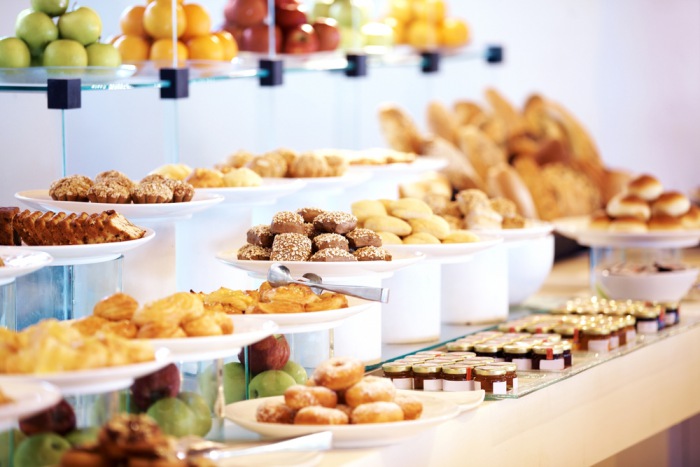What is a Race Day Morning Meal
It’s more appropriate to categorize a race day morning meal by what the food consists of in terms of nutrition. A wide range of foods can meet your needs and the list extends beyond bagels and bananas. Miles and hours in the saddle, gender, size, fitness, environmental conditions, and nutritional status leading into the event all play roles in what you need to eat the morning before a race.
What Professionals Eat
To eliminate the guessing that goes into finding the right balance of foods for what to eat race day morning, it might be best to look at some of the favorites per a survey of professional racers.
What to Eat Race Day Morning
Belkin nutritionist, Marcel Hesseling advises his racers to eat like this: “To consume the right amount they have to eat a lot of carbohydrate-rich foods but it’s really important to do that with foods they are used to eating to guard against stomach upsets.”
“Because it is really important for their glycogen stores are completely full, they have to choose products with a high carbohydrate density (oatmeal, bread, rice, energy bars/drink, juices, etc).
“It’s important that the riders eat the food that they normally eat,” said Hesseling. “Our cook makes delicious pancakes, oatmeal and fresh bread.”
Alberto Contador only eats food prepared by Saxo Bank team chef Henna Grant. Her “what to eat race day morning prep” for racers is summed up like this: “The riders follow a diet very low in milk and milk products, and most drink rice milk.” The reasoning she said, is that “lactose is not highly digestible and therefore more difficult to convert to calories.
“Breakfast consists of a hot porridge, a mix of rye, spelt, and barley. Fruit and nuts are added to the meal as well.” Grant also offers a traditional Danish style muesli made with corn flour, dried carrots and lots of grains soaked overnight in yogurt (one of the few times milk products are used).
Trek Factory Racing’s head chef Kim Rokkjaer and senior sports nutritionist Emma Barracloug is also on board with the porridge and muesli: “First up is an early serving of porridge consisting of oats, cinnamon, pineapple juice, salt and olive oil. If the riders prefer the muesli, it’s prepared like this; basic muesli (no added sugar), rice milk, mixed berries, honey, natural yogurt.
Emma Barraclough has this to add: “From the moment the riders wake up, their diet is focused on maximizing their carbohydrate stores. The fruit juice and olive oil keep the muesli dairy free and the oil ramps up the calories. Muesli is really popular with the riders. Again it’s a good combination of fast and slow release carbohydrates, with plenty of fruit included. The rice milk and yogurt provides protein.”
Austrian sports nutritionist Judith Haudum, who is responsible for feeding the BMC Racing Team has prepared a typical menu for race day morning.
- 1 bowl of porridge (150 calories per cup, cooked) with banana (105 calories per banana), and some nuts (529 calories per cup of almonds)
- 1 big plate of pasta (174 calories per cup)
- 1 piece of cake (roughly 225 calories)
- Coffee (1 calorie per cup)
- Fruit juice (122 calories per serving)
Porridge and Muesli
It might seem that porridge and muesli (a type of porridge) have the most votes for what to eat race day morning. Porridge and muesli both fall into the category by definition of “any grain simmered in liquid to become a hot cereal.” But what works for some cyclists, doesn’t necessarily appeal to others:
British cyclist Mark Cavendish has won the final Tour de France stage four times in a row—at the time of publication, he holds a total of 25 stage wins. This is what he has to say on what to eat race day morning:
“A lot of riders like eating oatmeal for breakfast, but that’s not something that works for me. But rice does, so I’ll have an omelet and rice for breakfast in the morning—it’s such a simple carb to digest, and it has a lot of fluid. I also don’t drink much dairy—a lot of riders say drinking milk before riding increases phlegm in their chest. Instead, I’ll take an alternative, like almond milk or sometimes soy milk.”
Go With Your Gut
The only sure way to know what works for you is to test a variety of strategies and repeat until you find the meal that works for you. Don’t eat anything risky. Don’t eat things that you’re unsure that your stomach can handle. Take advantage of long days in the saddle and use them as test races.
